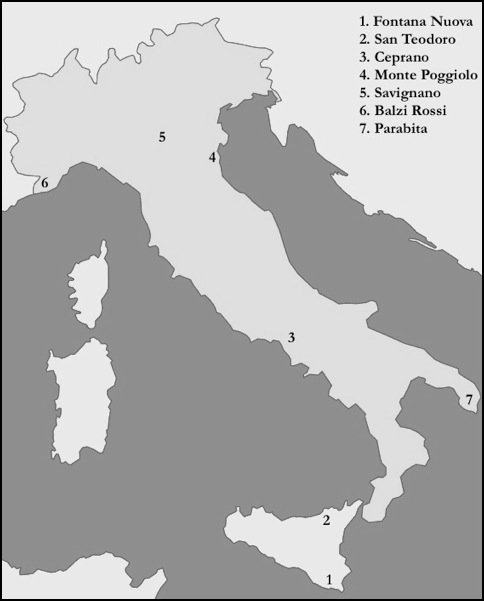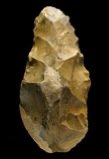Aurignacian
Upper Palaeolithic Italy
23/08/09 13:21 Filed in: Palaeoanthropology

Extrapolating from data by Bocquet-Appel et al. (2005) it is possible that the population of Italy did not exceed 1,000 inhabitants. While this figure is little more than a best guess, it still gives us an idea of the fragile nature of these groups, who were living constantly on the edge of extinction. With such small numbers inbreeding can become a serious problem. However, studies of European Upper Palaeolithic people find them to be surprisingly homogenous as a whole, which would suggest a significant amount of gene flow between far-flung populations (Henke 1989, 1991). In order to understand how mating systems would have operated during the Early Upper Palaeolithic researchers have looked to modern hunter-gatherer groups. Such studies have found hunter-gatherers to have less group closure than agriculturalists. This would have been an important survival strategy for the hunter-gatherer groups of the Upper Palaeolithic, especially when faced with unpredictable environmental conditions and already constrained mating networks. This open network is also reflected in the material culture from this period. Venus figurines, dating chiefly from the Gravettian period, have been found over an area of approximately 2000 km, spanning from modern day Russia in the Northeast to Spain in the Southwest. The Italian Venuses from Savignano, Balzi Rossi and Parabita show the same female form, with an enlarged midsection, pronounced buttocks, large breasts and voluminous thighs, characteristic of the vast majority of these figurines. This suggests that there was an extensive flow of people and ideas during the Early Upper Palaeolithic. This is further supported by the transport of exotic materials, such as flint and shells over distances of several hundred kilometres. Read More...
0 Comments
Who made the Aurignacian?
30/05/09 23:40 Filed in: Palaeoanthropology
Until recently, it was largely assumed that the Aurignacian was contemporaneous with the arrival of anatomically modern humans in Europe sometime around 40,000 years ago. This industrial complex is named after the site of Aurignac in southern France and is found throughout Europe and southwest Asia. The evidence for an association between modern humans the Aurignacian has been less than clear cut.
For most of the last century, the prevalent view among archaeologists was that Neandertals only made Mousterian tools. However, the discovery of the St Césaire 1 Neandertal skeleton and the Neandertal remains from Arcy-sur-Cure with Châtelperronian industry put paid to this idea. Châtelperronian tools show a mix of features otherwise found in the Mousterian and Aurignacian industries. What was particularly surprising about the Châtelperronian culture was not only the lithics but also the manufacture of bone tools and personal ornaments. At the site of Arcy-sur-Cure archaeologists found pierced teeth, ivory, shell, and bone in the Châtelperronian layers. The Szeletian industry of central Europe and the Uluzzian industry of Italy may also be related to the Châtelperronian.
Read More...
For most of the last century, the prevalent view among archaeologists was that Neandertals only made Mousterian tools. However, the discovery of the St Césaire 1 Neandertal skeleton and the Neandertal remains from Arcy-sur-Cure with Châtelperronian industry put paid to this idea. Châtelperronian tools show a mix of features otherwise found in the Mousterian and Aurignacian industries. What was particularly surprising about the Châtelperronian culture was not only the lithics but also the manufacture of bone tools and personal ornaments. At the site of Arcy-sur-Cure archaeologists found pierced teeth, ivory, shell, and bone in the Châtelperronian layers. The Szeletian industry of central Europe and the Uluzzian industry of Italy may also be related to the Châtelperronian.
Read More...

